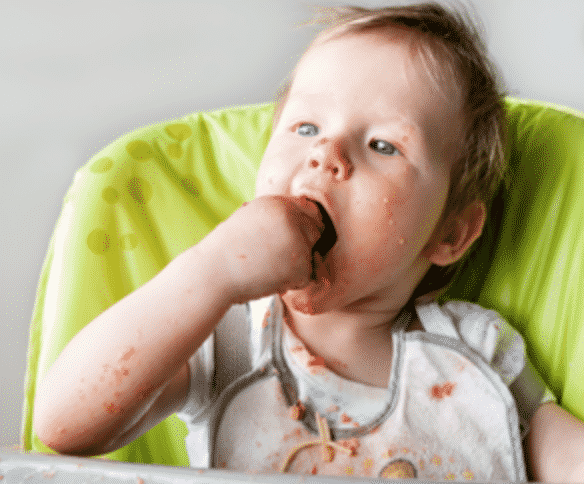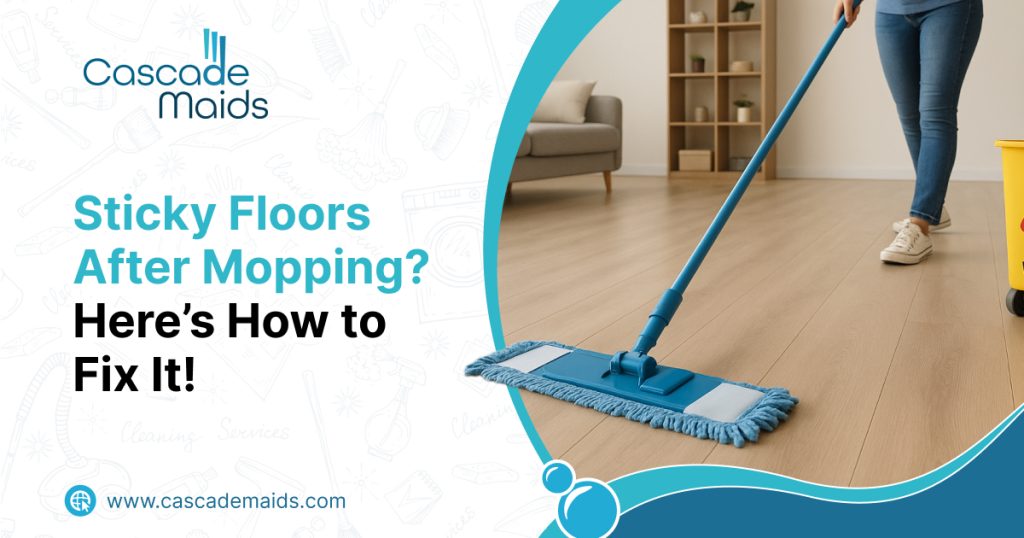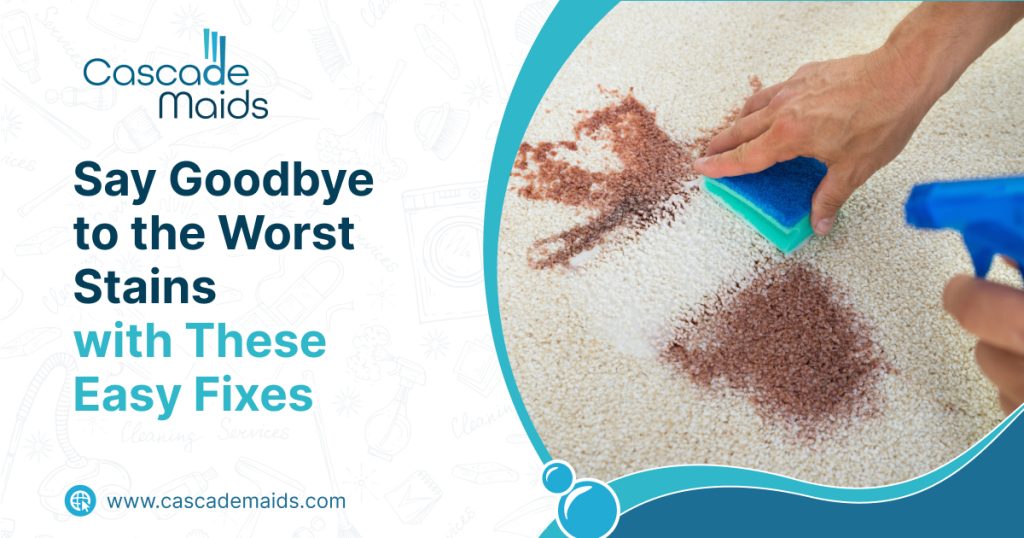Soak and Scrape
Before you scrub or pre-treat any stain, make sure you eliminate as much of the solid material as you can – i.e. poop, carrots, peas, etc. Don’t allow the stain to just sit there. If you don’t have enough time to clean a stain immediately, start to soak it in some cold water until you can give it to your complete attention.
Protein-Based Stains.
Using an enzyme-based cleaning is the best tool to use on protein-based baby stains (poop, egg, spit-up, formula, breast milk). The proteins inside the stain are digested by the enzymes to help with breaking them down. After you have soaked the piece of clothing, spray on the cleaner to cover the stain completely.
Food Stains.
Peas, sweet potatoes, and carrots all can leave permanents marks on your infant’s clothing. If possible, let the piece of clothing soak in cold water overnight to loosen up the stain. Add a pre-treater or some dish soap to the stain directly. Rub in the pre-treater, make it sit for a few minutes. Wash the item of clothing as usual. However, don’t dry it if the stain is still there. Repeat this process. Only hang it out to dry after the stain has been removed.
Greasy and Oily Stains.
Creams, petroleum jelly, and baby oil can all leave greasy marks on clothes. Blot as much of the substance off as possible, and then sprinkle talcum powder or cornstarch on the garment to absorb any remaining oil. Then apply a pre-treater and wash the item of clothing the way you usually do.
Use Bleach When Needed
The ultimate weapon that can be used to get rid of unsanitary and stubborn stains is bleach. However, you need to use it carefully. Delicate baby clothing might not take the harshness of bleach well. Make sure to check the laundering label on the garment and test an area inside the hem to find out how the fabric reacts to the bleach. Another good option is color-safe bleach. If all else fails calla professional cleaner in your area.




